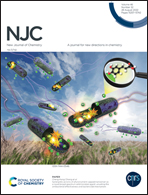A sustainable pseudo-homogeneous catalyst from renewable biomass: design, development and catalytic applications†
Abstract
In the fossil-dependent era, most of the catalytic and other functional molecules are prepared using the fine chemicals derived from fossil resources. To mitigate our dependence on fossil resources, a sustainable raw materials-derived pseudo-homogeneous catalyst is developed. L-Tyrosine and fructose-derived 5-hydroxymethylfurfural (HMF) are the sustainable raw materials used in the development of the catalyst. In the bifunctional HMF, the carbonyl group is converted into a hemi-salen moiety for the ligation and the hydroxymethyl group is used as a hook to immobilize the catalyst on a polymeric resin. With a futuristic scope to incorporate additional functionalities into the catalyst system, a tri-functional tyrosine is inserted into the core and the amino group of tyrosine is kept Fmoc-protected. The applications of the developed catalyst system are demonstrated in two important C–C bond forming reactions: (i) A3 coupling reaction to synthesize various propargyl amines and (ii) synthesis of dipyrromethanes. Propargyl amines were obtained in up to 94% yield and the dipyrromethanes were obtained in up to 86% yield. The advantages of pseudo-homogeneity were evidenced by the easy recovery of the catalyst without compromising the catalytic activities of a homogeneous-alike system.



 Please wait while we load your content...
Please wait while we load your content...